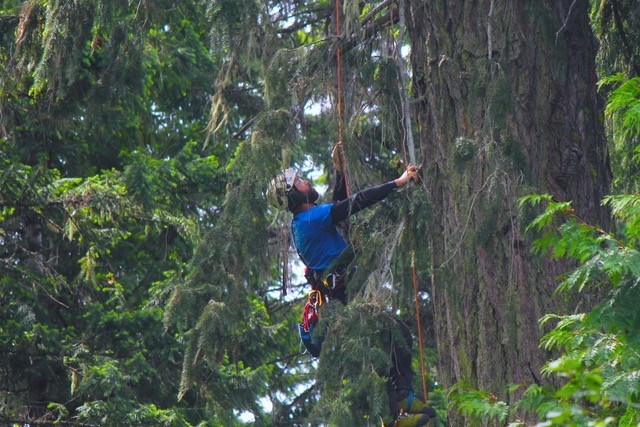Whistler's 13th annual BioBlitz got under way this weekend with a presentation aimed at drawing attention to the plight of old-growth forests in B.C.
"It is not what should ever be characterized as sustainable resource management," said Andy MacKinnon of logging old-growth forests.
MacKinnon, a retired professional forester, professional botanist and councillor for the District of Metchosin on Vancouver Island told a packed conference room on June 7, "I have been banging my head against the wall through two successive governments in a decade (on this issue), and the current NDP government is logging at least as much and maybe a little bit more old-growth than the previous Liberal government.
"There are times when I think that the most important purpose that big trees and old trees serve is to inspire people to wonder, and to inspire people to want to conserve."
His comments come just one day after 17 MLA and government offices were targeted by demonstrators calling on the B.C. government to "take immediate steps to save the few remaining intact areas of old-growth forest on Vancouver Island and endangered old-growth forests across the province," according to a release by the Sierra Club BC.
Today, 79 per cent of the original productive old-growth forests (trees that over 250 years old) on Vancouver Island have been logged, including 90 per cent of the valley bottoms where the largest trees grow.
"B.C.'s coastal temperate rainforests are among the rarest ecosystems on the planet, but today less than 10 per cent of Vancouver Island's largest old-growth trees are left," the Sierra Club release goes on to say. "The current rate of old-growth logging on Vancouver Island is more than thirty soccer fields per day or about 10,000 hectares a year."
Both the BC Chamber of Commerce and Union of BC Municipalities have asked the province in recent years to take steps to protect old-growth forest recognizing that there is often a strong economic reason to keep the trees standing, as they are strong drivers of tourism.
"If I were talking to a bunch of financial planners then I would be talking money," Bob Brett a forest ecologist with Snowline Ecological Research, said during the BioBlitz presentation on June 7.
"They totally get why we should be leaving these standing as they have economic benefit, so if it can't happen in Whistler it can't happen anywhere."
Whistler generates $1.37 million in daily tax revenue from its economic activity, most of which is driven by tourism.
This year in Whistler local groves of old-growth will also be logged as part of the plan for the Cheakamus Community Forest (CCF). Eight sites are targeted for harvesting in 2019, alongside three wildfire fuel reduction projects. All of the retention logging would be in old-growth forest- the estimated cut would amount to about 460 logging trucks.
BioBlitz also saw the launch of a brand new resource to heighten the profile of the valley's trees-a pocket-sized map titled Whistler's Old and Ancient Trees, which located some of the area's biggest trees. Produced by Snowline and the Association of Whistler Area Residents for the Environment (AWARE) look for it throughout the resort in coming days.
Also speaking at the presentation was big-tree hunter Shaun Muc who encouraged everyone who hikes, tours or gets out into the backcountry to look for ancient and old trees.
"It is humbling to stand before these giants," he said. "Take the time to really look at them and imagine what they have survived over the hundreds of years they have been on this Earth."
If you find an ancient or giant tree nominate it to the Big Tree Registry, said Muc, who is on the Registry's committee. "We don't just want the champions, we want to hear from you about the big trees you find."
(To email your big tree information in and to find out how to measure one go to https://bigtrees.forestry.ubc.ca.)
The Whistler Naturalists, which organizes BioBlitz, also invited Expedition Old Growth to set up a tree-climb in the Centennial Trail area near Spruce Grove to explore the canopy of a 700-year-old Douglas fir.
The company uses low-impact rope access and modern ecologically ethical climbing techniques, to explore and expose the importance of the biologically rich and stable environments associated with ancient trees.
"The canopies are an area that are very underrepresented and under-explored and we want to share that with people, so we are trying to get people stoked on the unique environments that we get to see pretty much on a daily basis," arboculturist, professional tree climber and canopy-access specialist Matthew Beatty told the BioBlitz presentation.
"We want to educate people on the sensitive environments of the canopy."
The province is inviting feedback from the public on ways to improve the Forest and Range Practices Act until July 15, which can be submitted on the B.C. government website. The coastal forest sector employs 24,000 people and generates $3.1 billion in gross domestic product.
BioBlitz continues with events all weekend. To find out more go to https://www.whistlernaturalists.ca/bioblitz




